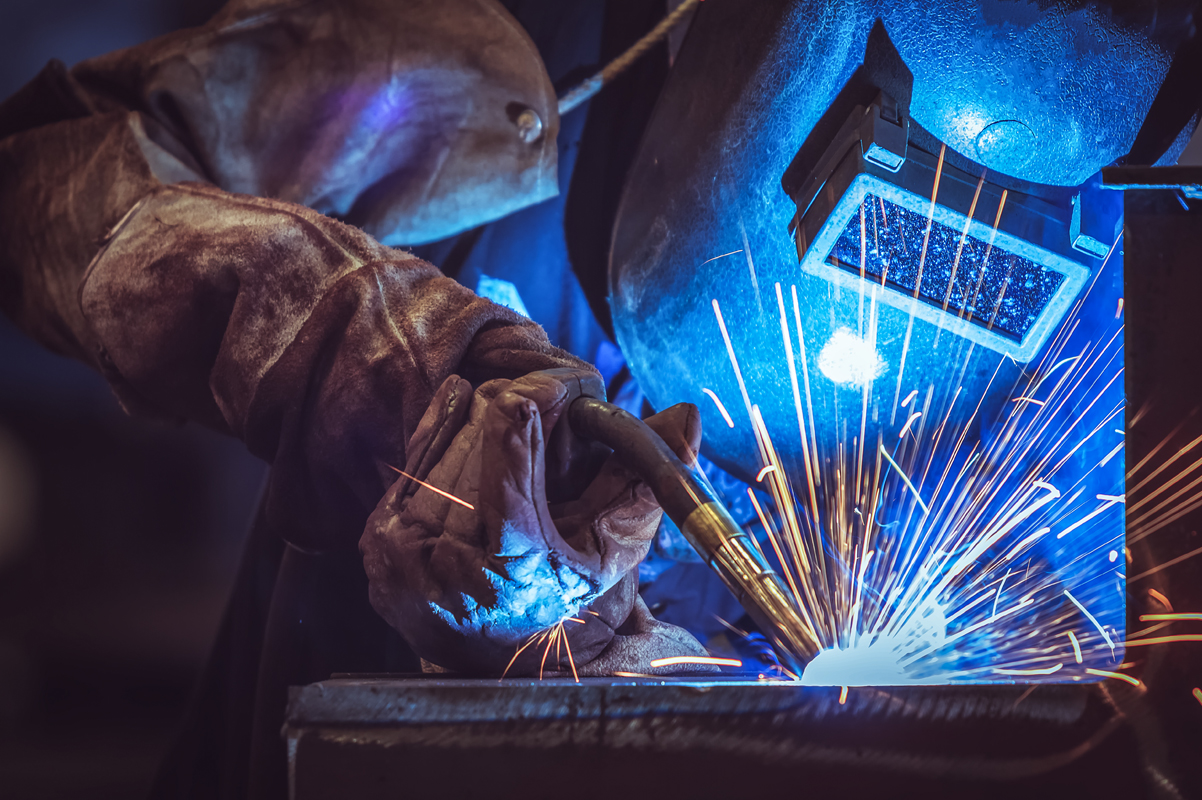Welding Basics
Welding technology - The introduction
1. Introduction welding technology
2. Inert gas welding
3. Proceedings at Sinotec
3.1 Metal arc welding (MSG process)
3.1.1 Metal active gas welding (MAG welding)
3.1.2 Metal inert gas welding (MIG welding)
3.1.3 Tungsten inert gas welding (TIG welding)

1. Introduction welding technology
Welding is a manufacturing process that is assigned to the main group Joining. Basically, in this process, two or more parts are joined into a continuum using heat, force or a combination of these.
Irrespective of the multitude of processes involved, welding creates a material-tight connection that is simultaneously non-detachable. This means that the welded joints can only be separated by destruction.
2. Inert gas welding
Bei Sinotec haben sich Schutzgas-Schweißverfahren, die sich zu den Lichtbogen-Schweißprozessen zuordnen lassen, etabliert. Hierbei werden, wie die Bezeichnung schon verrät, Schutzgase verwendet, die das vom Lichtbogen erzeugte, lokale Schmelzbad am Bauteil vor Oxidation schützen, d. h. das Eintreten vom umgebenen Sauerstoff vermeiden.
Argon, carbon dioxide, the relatively expensive helium or mixtures of these are used as welding shield gases. The welding shield gases can also contain hydrogen, oxygen or nitrogen. In addition to protection against oxidation, these shielding gases also have an influence on the ignition process of the arc, the appearance of the seam, spatter formation, etc.
3. Welding procedures at Sinotec
In the following, welding processes that are used at Sinotec are presented:
3.1 Metal shielded arc welding
In the metal shielded arc welding (MSG-processes), which are characterised by their very high productivity, a welding filler in the form of a wire electrode is used. The continuously conveyed wire electrode, which serves as filler metal, melts during the welding process and forms a material bond with the components to be joined. As a rule, the MSG process uses direct current, with the wire electrode forming the positive pole and the component to be joined the negative pole.
Depending on the type of protective gas used, the processes can be further subdivided. If active gases are used, the process called Metal active gas welding . When using inert gases, the process is called Metal inert gas welding . The choice of inert gas is determined by the material to be joined.
3.1.1 Metal active gas welding (MAG welding)
As the name suggests, active shielding gases, such as argon mixture or argon-oxygen mixture, are used in MAG welding. The "active" gases react with the molten pool during the welding process and stabilize the arc. In addition, the penetration of the weld seam can be increased by the active gases. This process is generally used for welding unalloyed and low-alloy steels.
3.1.2 Metal inert gas welding (MIG welding)
MIG welding uses inert gases, i.e. non-reactive gases. These can be noble gases such as argon or helium. The inert gases prevent thermal oxidation and other contamination of the molten metal during the welding process. This process is used to weld high-alloy steels and non-ferrous metals such as aluminium.
3.1.3 Tungsten inert gas welding (TIG welding)
In TIG welding, also known as TIG welding (Tungsten Inert Gas Welding), a non-melting tungsten electrode is used instead of the wire electrode in the previous processes. The tungsten electrode is surrounded by an inert gas and thus protects the arc and the melt from the surrounding oxygen and other contaminants. The heat of the arc generated between the workpiece and the tungsten electrode is used to melt the base material and a filler metal. The filler material, which can be used optionally, is fed into the arc and the melting bath from the side and at the same time protected by the inert gas. Depending on the application, TIG welding is also possible with alternating current.
This process is preferably used for joining high-alloy steels and aluminium alloys.
The main advantage of this process is the very high seam quality. A disadvantage is the relatively low productivity of the process.
